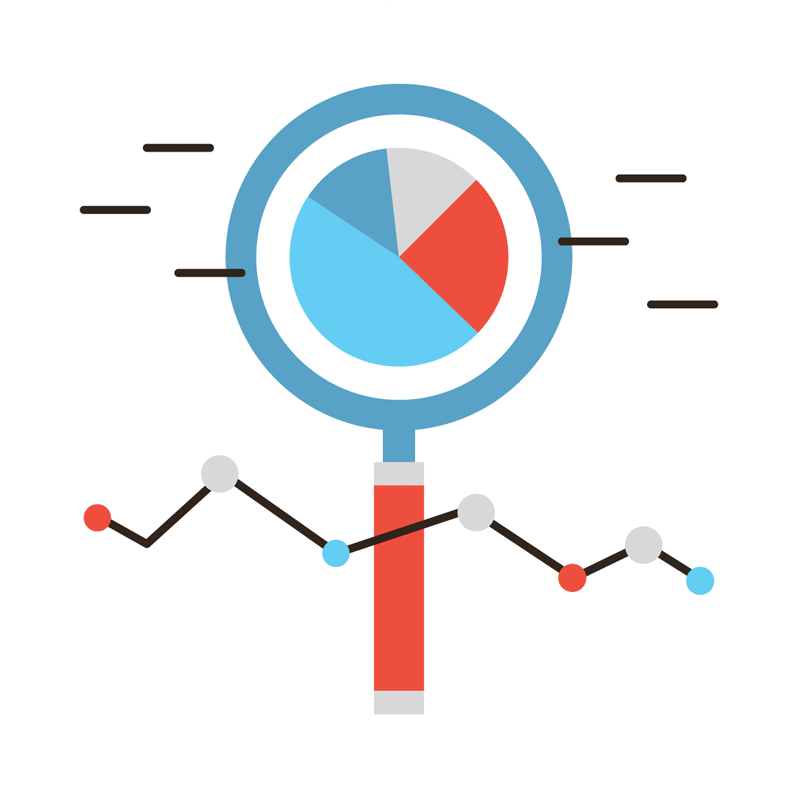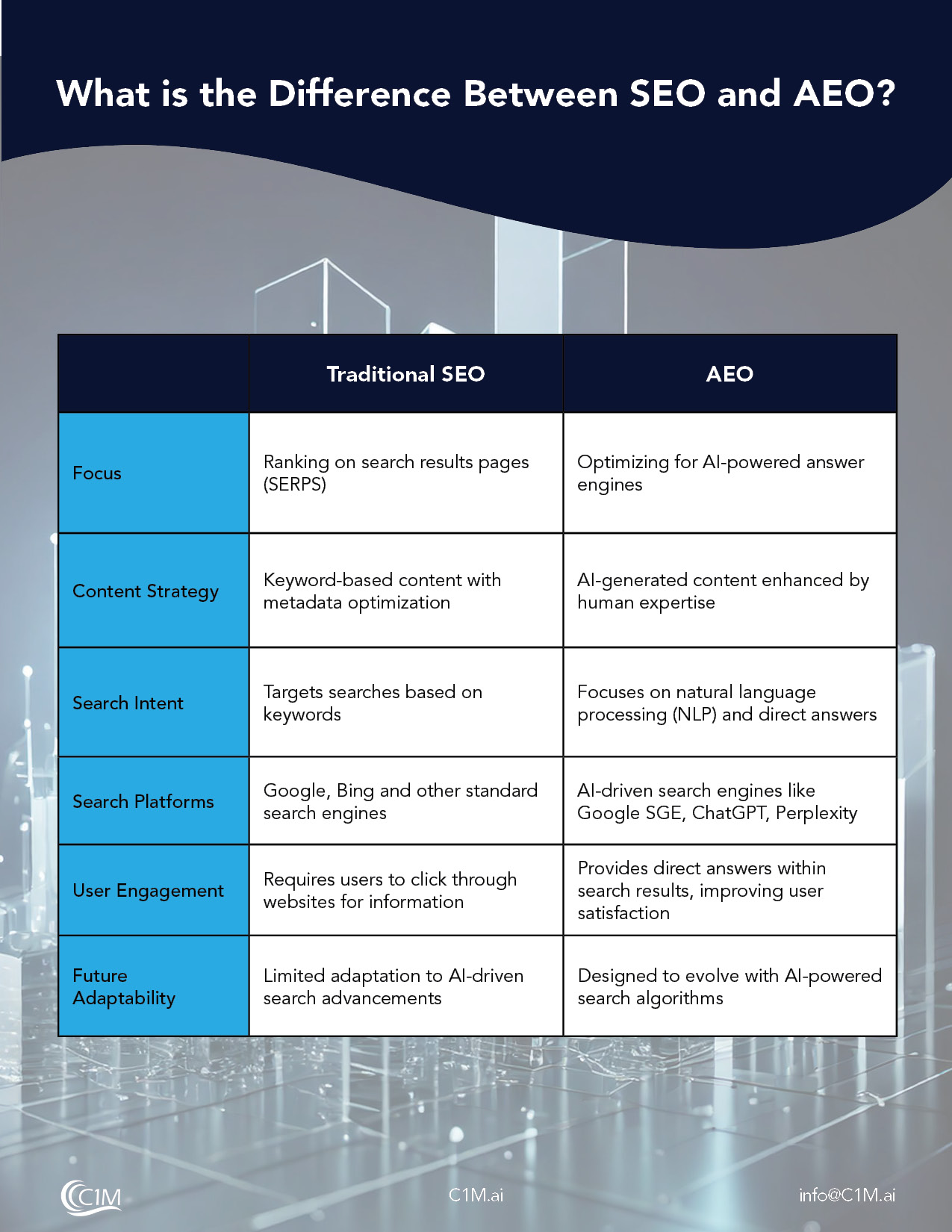
There is one key difference between a successful business and one that never gets off the ground: Marketing. Without attracting customers, your digital business is dead in the water. But simply drawing new customers in isn’t enough; you need to understand what those customers are thinking and how they’re interacting with your brand. This is where analytics come into play.
The Marketing Cycle
Marketing is a constant process. It never stops. It does, however, move in a cyclical pattern, allowing you to learn from the past and apply it to the future as you come back around to the same process:
- Begin by identifying the target audience of your marketing campaign.
- Look at your competition and see what they are doing so that you can compete.
- Identify where your audience can be found, whether online or off, so that you can target your marketing appropriately.
- Set measurable goals for your campaign.
- Develop a strategy for meeting those goals.
- Put your strategy to work.
- Measure your results.
- Analyze those results so that you can put that knowledge toward your next marketing campaign.
As you can see, measuring and analyzing your results is a crucial part of the cycle. Without that analysis, you won’t be able to make the changes to add value to your marketing endeavors, and your results will begin to stagnate. Only by learning from the past can you make the right changes to improve the future.
What Should You Measure?
Marketing involves a lot of moving pieces. In any given marketing campaign, there could be a lot of variables affecting your end results. Below are some common metrics clustered by type. The more of these metrics you can track, measure and analyze, the more thorough your results will be. Just be aware that no single metric will tell the whole story. For a really accurate snapshot of your campaign, you’ll need to gather as much information as possible from each category below.
Organic Search and Property Performance
These metrics all look at the quality of your website in terms of organic search results and the site’s overall strength. Organic results are especially important to track because they give you insight into how well your search engine optimization is working: If you’re getting a lot of unique visitors, that’s a sign that you’re ranking well for keywords that people are searching for.
Unique Visitors
This is one of the simplest things to measure: How many new people are coming to your site each day?
Unique Visitors Seven Day Trend
This builds on the above. By looking at your trend over the duration of a week, you can see whether your traffic is growing, dropping or maintaining consistent levels. This also helps you see how your traffic might spike when you add new content to a site, giving you an idea of how well a new blog post or page is working.
Bounce Rate
The visitors you attract aren’t helpful if they don’t stick around long enough to offer any helpful or even constructive suggestions. Bounce rate measures how frequently someone lands on your page only to navigate away from it. A bounce can be caused by many things, but there are two common contenders. First, the site may fail to deliver what the visitor is looking for. This can happen if the keywords you’re targeting with your SEO are not a good match for the rest of your content: A reader looking for how to cook steak is not going to stay on a site that’s predominately about classic cars. The other reason a reader will bounce is if the site is poorly designed, difficult to navigate or just doesn’t seem to offer quality content. If you have a high bounce rate, it’s a sign that something about the design or SEO of your site needs to be changed.
Average Time on Site
When a reader stays on your site, that’s a sign that he is engaging with the content. You want a long stay. The more time your reader spends looking at your pages, reading blog posts or watching videos, the more of a connection he will have with your brand. This means that he’ll be much more likely to become a conversion later. If you have a low bounce rate but viewers aren’t spending much time on the site, it’s probably a sign that you’re not offering enough content to keep the reader engaged.
30-Day Change in Google Rank for Target Key phrase
Keyword searches can fluctuate hugely from day to day, and a single-day snapshot of your Google rank won’t tell you much. To see how you’re really doing for a specific keyword, you’ll need to look at the overall picture for the month. A 30-day glimpse at your Google rank will tell you how you’re doing for your keywords and phrases and let you know if there’s a problem with your SEO strategy.
Domain Authority
Domain authority is actually a combination of other metrics compiled to determine how well your domain will likely place within Google searches. High-authority sites are those that rank highly in search engines. Each individual page in your site has a page authority as well, separate from your domain authority.
Of course, just because your site gets a lot of traffic doesn’t mean that it’s going to be successful at converting that traffic into profit. You’ll need other metrics to let you know whether the audience you’ve attracted is really the right target for your marketing.
Advertisement Performance
Organic search results are golden, but they’re often not enough to drive the traffic and results you need. This is where advertising budgets come into play. If you’re placing ads on Facebook, Google, Bing or any other venue, though, you need to know that your marketing dollars are well–spent. Here are a few metrics you should keep in mind when designing and monitoring your ad campaign:
Total Reach
The total reach of your ad is, quite simply, how many people had the opportunity to see it. Your reach is often determined by the amount of money you spend, but being careful with your choice of targeting can help you boost your reach by pinpointing a receptive audience that may not have as high of competition.
Click Through Rate (CTR)
The click-through rate, or CTR, is a record of how many people clicked on your ad after viewing it. If you have a high reach but a low CTR, it’s a sign that either the ad itself is not working or the product you’re offering is not enticing enough to capture a viewer’s attention.
Cost Per Lead
This is one way to track the efficiency of your advertising strategy. To get your cost per lead figure, you’ll need to take the amount you’ve spent on a campaign and divide it by the number of leads it generated. You’ll ideally want to target this in such a way that only leads from that campaign are measured. This will give you a good idea of whether your ads are converting customers or not.
Cost Per Sale
This is similar to the metric above, except you’re tracking actual sales rather than leads. In businesses that are built on long relationships and communication, leads are very valuable. For other businesses, focusing purely on sales is a better indicator of how profitable a campaign actually was. In either case, tracking the cost per sale or lead will give you an idea of whether your advertising costs were worth the results.
Email is one of the most powerful tools at your disposal for connecting with your prospects. If a prospect has gone so far as signing up for your mailing list, you know that he’s interested in your message. This is why it’s important to monitor the performance of your email campaigns to ensure you’re getting the results you want.
Open Rate
This measures how many of your emails are actually opened rather than sitting discarded in a reader’s inbox. If you have a low open rate, it’s probably either because your subject line failed to intrigue the reader or the email landed in a spam filter rather than the recipient’s inbox. A low open rate is a sign that you need to pay more attention to your subject lines
CTR
Emails, like ads, can have a click-through rate. This applies in any case where your email nudges a reader toward taking an action, whether it’s visiting your website, watching a video or going to your sales page. If you have a low CTR for your emails, it may be because your call to action is not compelling enough.
Engagement Rate
Engagement is a tricky thing to pin down. When it comes to your emails, engagement mostly means that a person opens and reads the message. Therefore, your engagement rate will be closely tied to your open rate. The difference between opening and engagement is that engagement happens over time whereas open rates look at each individual email. So an engagement rating allows you to look at the behavior of readers over a span of time to see whether the same people are continuing to open and read emails. If you’re reaching new audiences or losing old ones, you’ll spot it in your engagement statistics.
Social Media
Social media is a relatively new channel for connecting with your audience, and it can be hard to see exactly how it fits into your overall marketing picture. Just as print and digital marketing can sometimes target different audiences, you might find that the people interacting with your Facebook feed are not the same as those on your blog. This makes tracking your social media activity all the more important.
Engagement Rate
Engagement on social media is easier to track than in other areas because it’s much more active. Instead of passively reading, social media followers can like, share or comment on any piece of content. Keeping track of all of this activity can help give you an overall picture of how active your fans are. Just don’t get too hung up on this figure: An active, engaged group of followers is great, but it doesn’t translate directly to a successful business.
Virality Score
Virality is one of the most sought-after qualities of online content. It’s also the hardest to measure or even define. Basically, viral content is content that takes a life of its own; it’s a message that your readers pass along for you. For example, consider a commercial. A standard commercial is played on a network to the audience. A viral commercial is one whose audience shares the ad with all of their friends. You want to go viral because it means your message will be spread far wider than it otherwise could.
To measure virality, most people rely on the k-factor. Your k-factor is the way to track exponential growth: How many extra people will you get for each person you attract on your own? Some people debate the effectiveness of k-factors and others suggest that it’s impossible to really measure virality at all, but keeping an eye on these metrics can at least help you get some idea of whether your content is going viral.
Conversions
A conversion occurs whenever a person takes an action. This means that a conversion could be a sale, but it could also be a phone call, blog comment or email address submission. Any time a person visits your page and takes action based on what he sees there, it counts as a conversion. Since conversions are ultimately at the heart of your profits, your conversion rate is a very important metric to monitor.
Landing/Sale Page Conversion Rate
You’ll have separate conversion rates for every sale page and landing page you own, because each of these pages will have its own call to action. Tracking conversions is as simple as dividing the number of visits a page makes by the number of people who opted into the offer on that page. This will show you how effective a page is at converting visitors into prospects or prospects into sales.
Total Cost Per Lead
Earlier, we talked about cost per sale as it relates to advertising. Your cost per lead is a more all-encompassing figure. It takes into account every marketing dollar spent across all of your activities, divided by every lead you’ve converted. This gives you an idea of how efficient your marketing activities are.
Analyzing Your Data
Of course, simply gathering data isn’t enough. You also have to put what you’ve learned to good use. After all, information is useless if it’s not analyzed. So once you’ve gathered some data, it’s time to sit down with your information and pay attention to the big picture. Don’t get too hung up on the details of any single metric or any particular day. Look instead at trends, and see what you can glean from that information. Here are some examples of things to look for:
- Bounce rate – Are people leaving your site because the content isn’t what they’re looking for? Or are they leaving because it’s displayed poorly or the layout is hard to navigate?
- Conversion rate – Are you getting plenty of conversions? Could you get better conversions by changing your incentive, tweaking the wording of your call-to-action, redesigning your page or anything else?
- Ads – Are you reaching the right audience? Would you get a better click-through rate if the ad were reworded or targeted to a different demographic? Is the cost of the ad worth the value of the lead?
- Engagement – Once you attract visitors, what are they doing? Are they sharing your content? Are they sticking around to read more information? Are they signing up for your newsletter? If not, how can you encourage them to do those things?
Split Testing: The Scientific Method for Markets
There’s a simple reason why your marketing goals need to measurable: You need to be able to test them. If you choose metrics that are easily measured, you’ll be able to run several versions of a campaign and test them against each other to see which one works the best. When you do this, your original data will serve as the “control” of the test you’re running; all of the new versions are variables.
Split-testing can be performed on anything. For example, you might decide to run two different ads on the same channel to see if one is more effective than the other, or you might run the same ad on two different channels. These two tests will help you see whether it’s your ad itself or your target demographic that’s affecting your results, which you can then use to modify your approach in the future. When testing, pick a single variable to test at a time. Otherwise, you won’t know for sure which of your changes was effective.
Here are a few types of split tests you can run:
- Develop two versions of your landing page and set it up so that visitors will randomly land on one or the other. This will let you know if your landing page itself is the issue behind your conversion rate, or if there’s another problem. After you’ve tried a few landing pages, try two versions of the same page with different incentives. If more people sign up for a free video than an eBook, you know which incentive your demographic prefers.
- If you’re having trouble with your bounce rate, consider tweaking your SEO strategy and testing the new version of the site.
- Run the same ads across multiple channels to see which areas attract the most attention from your target market.
- Try sending different emails to different sections of your list. You can divide up your mailing list according to various criteria from within your mail management program, and this will let you test out new headlines, message types and more.
As you can see, nearly any metric imaginable can be isolated and tested. Once you’ve gotten some practice with split-testing, you’ll realize that it’s often possible to pinpoint the exact variables affecting your results. While making the changes needed to improve those results isn’t always simple, the metrics make it a whole lot easier to get started.
Discover Marketing Analytics – Putting the Information to Use
There’s a popular saying among marketers: “If it can be measured, it can be improved.” Your job as a marketer is never complete because there are always ways to improve your results. Even if you’re happy with your current sales numbers, you can always find ways to grow your company, and seeking growth is a good thing. This growth is what will allow your business to stay competitive and continue adapting to the challenges thrown its way.
Once you’ve identified your areas for growth and tested some solutions, you should be able to draw valuable conclusions from those results. You might realize that you’ve been targeting the wrong demographic, or maybe some part of your message wasn’t being communicated clearly. Once you isolate and solve this problem, you should be able to set new goals and start the cycle again.
One of the most valuable uses of marketing metrics is determining the cost-benefit analysis of your marketing activities. Without a clear image of which parts of your marketing are effective and how much each lead or conversion is really costing you, you have no idea whether your marketing budget is sufficient. Having metrics on your side makes it easier to tell whether you need to spend more on advertising, hire better talent or trim a bloated budget to widen your profit margins.
Ultimately, taking a shot in the dark is never the right move when it comes to marketing. A successful campaign requires a well thought-out approach. Take the time to develop a strategy, set some measurable goals and build an action plan for achieving them. By monitoring your results, isolating variables and testing your solutions, you can ensure the best possible results.



